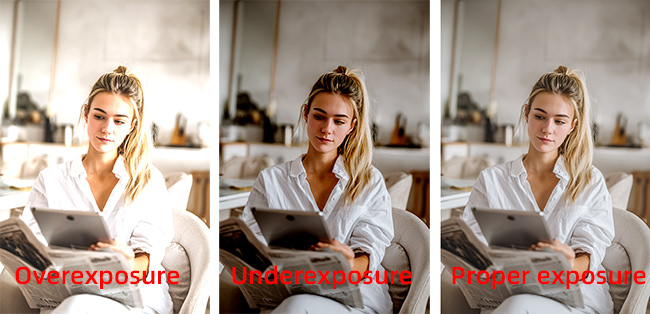Today, let's talk about the three elements of photographic exposure: aperture, shutter, and ISO.
1. What is exposure?
In simple terms, exposure refers to the amount of light "seen" by the camera lens.
Proper exposure: When taking a photo, the brightness of the photo is moderate, neither too bright nor too dark.
Examples:

Overexposure: That is, too bright, with loss of details in the bright areas, appearing as a blur.
Underexposure: That is, too dark, with loss of details in the dark areas.
Proper exposure: Both bright and dark areas retain details, making the image look natural and comfortable.
Of course, this excludes exposures for special effect needs, such as shooting silhouettes (e.g., silhouettes at sunrise or sunset).
In such cases, we can reduce the exposure to mainly convey the atmosphere of the entire scene under the setting sun.
2. Aperture (F-value)
The aperture controls the amount of light entering and the degree of background blur.
With the shutter speed and ISO unchanged:
① The role of the aperture determines the brightness of the light entering the lens.
A smaller F-value means a larger aperture, allowing more light in, resulting in a brighter photo and a stronger background blur (suitable for portraits).
A larger F-value means a smaller aperture, allowing less light in, resulting in a darker photo and a clearer background (suitable for landscapes).
3. Shutter speed (s)
Controls the duration of light entry and dynamic effects.
① Impact on photo brightness
The faster the shutter speed, the shorter the exposure time, the less light enters, and the darker the photo.
The slower the shutter speed, the longer the exposure time, the more light enters, and the brighter the photo.
② Impact on motion blur effects
A faster shutter speed can better capture and freeze moments without motion blur.
A slower shutter speed makes it harder to capture moments, resulting in stronger motion blur.
Definitions of fast and slow shutter speeds:
Fast shutter: 1/500s – 1/2000s (or even faster)
Suitable for capturing frozen moments of moving objects or people, such as moments in basketball games or running.
Slow shutter: 1/50s – 1/15s (or even slower)
Suitable for: capturing motion blur effects of people or objects, such as the blur of a running person, landscape blurs, flowing water in waterfalls, rain streaks, etc.
4. ISO (sensitivity)
ISO refers to the sensitivity to light, which relates to whether a photo is overexposed or underexposed.
It is denoted as "ISO" on the device.
Impact of ISO on brightness and image quality
A lower ISO value results in a darker image but finer image quality.
A higher ISO value results in a brighter image but more noise.
Overexposure: The photo is too bright, making details indistinct, especially in white areas which appear completely washed out. This cannot be remedied in post-processing.
A too-large aperture, a too-slow shutter speed, or a too-high ISO can all cause overexposure.
Underexposure:
The photo is too dark, with details hidden in the darkness and the subject indistinct. It can be rescued in post-processing, but this will also increase noise, affecting the image quality.
Summary of practical tips:
1. When taking photos, it's better to have an underexposed image than an overexposed one (overexposure cannot be remedied).
2. Prioritize using a low ISO to ensure image quality.
3. The three elements need to be adjusted in coordination:
To blur the background – use a large aperture.
To capture moving moments – use a fast shutter speed.
In low light conditions – appropriately increase the ISO.
Therefore, mastering these three elements and achieving proper exposure will make your photos more textured.
Related Tags: Experience in using cameras
